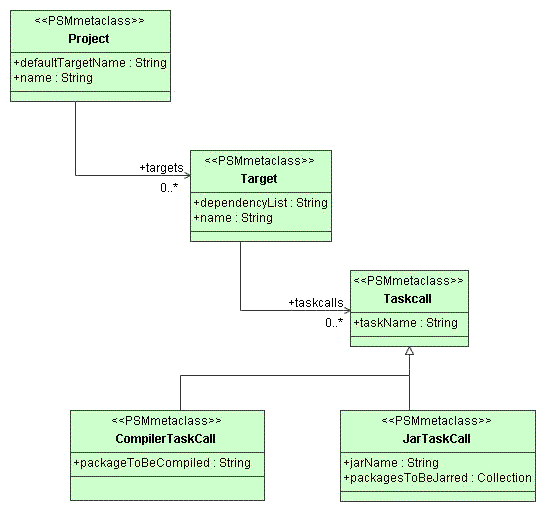10 steps to write a cartridge
This article shows you how to write an AndroMDA cartridge in 10 distinct steps,
using a sample cartridge which generates an Ant-like build script from a UML deployment model.
This is why the tutorial cartridge is called "andromda-deployment".
Identifying the PSM metaclasses
When you have found the core concepts of your target platform, design them into classes, the PSM metaclasses. They will form the PSM metamodel.
For our deployment cartridge sample, the PSM metamodel looks like this:

With this metamodel, you have a clear understanding of what an Ant build file contains (at least for the scope of this tutorial):
- A project can have a default target, a name and any number of targets.
- A target can have a list of other targets it depends on, a name and any number of task calls.
- A task call is a call to a named task which can be a compiler or a jar task

